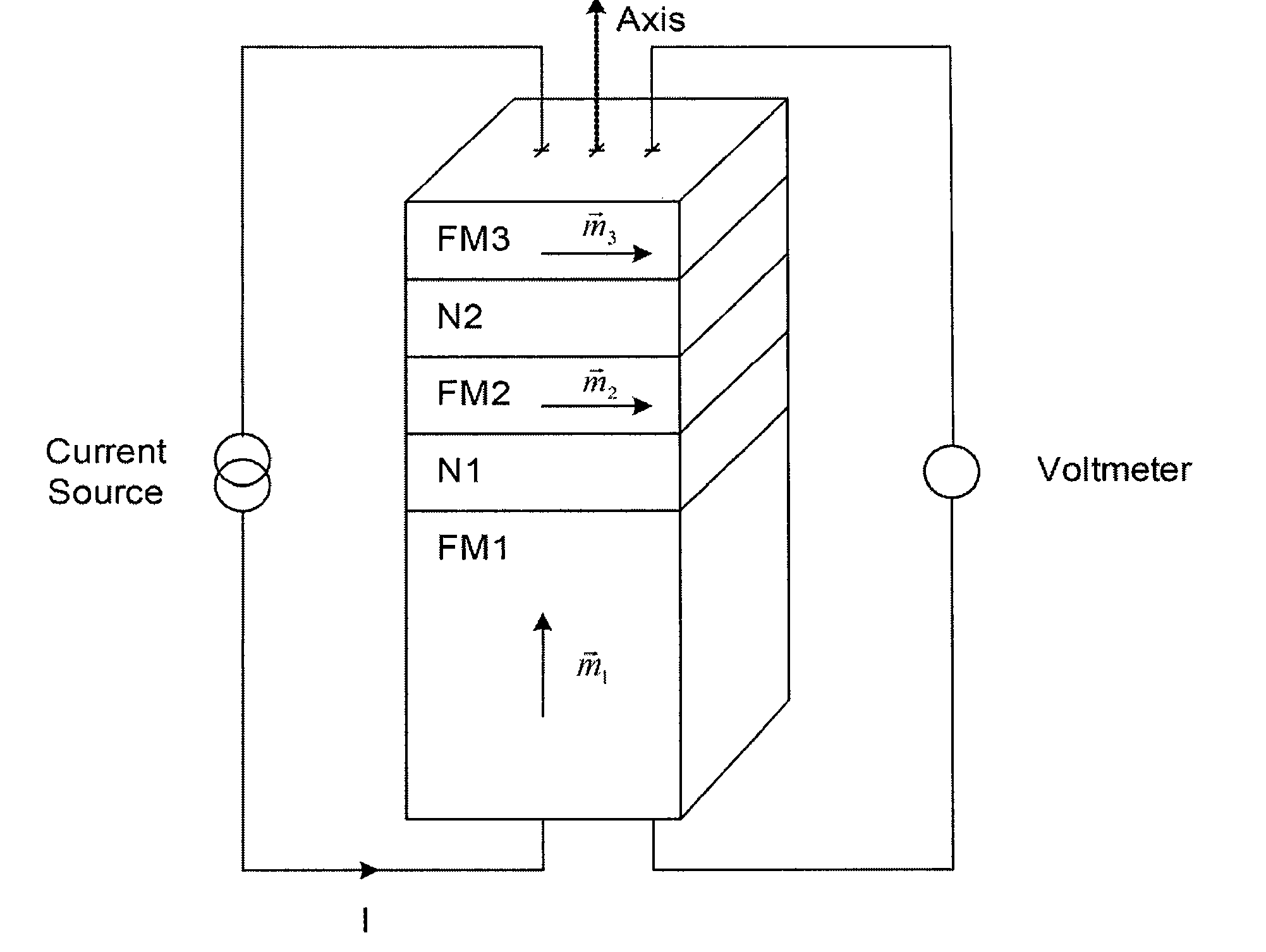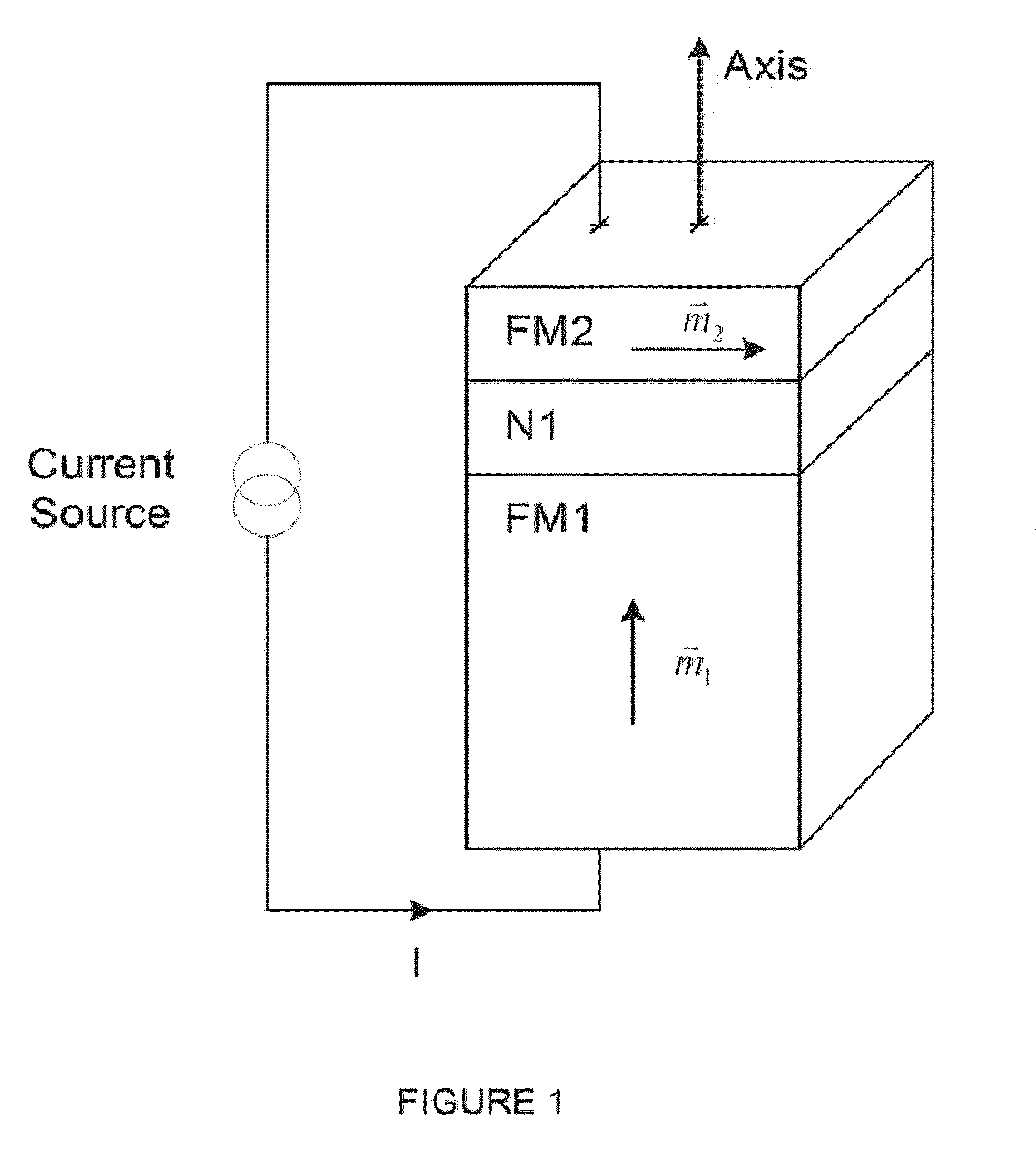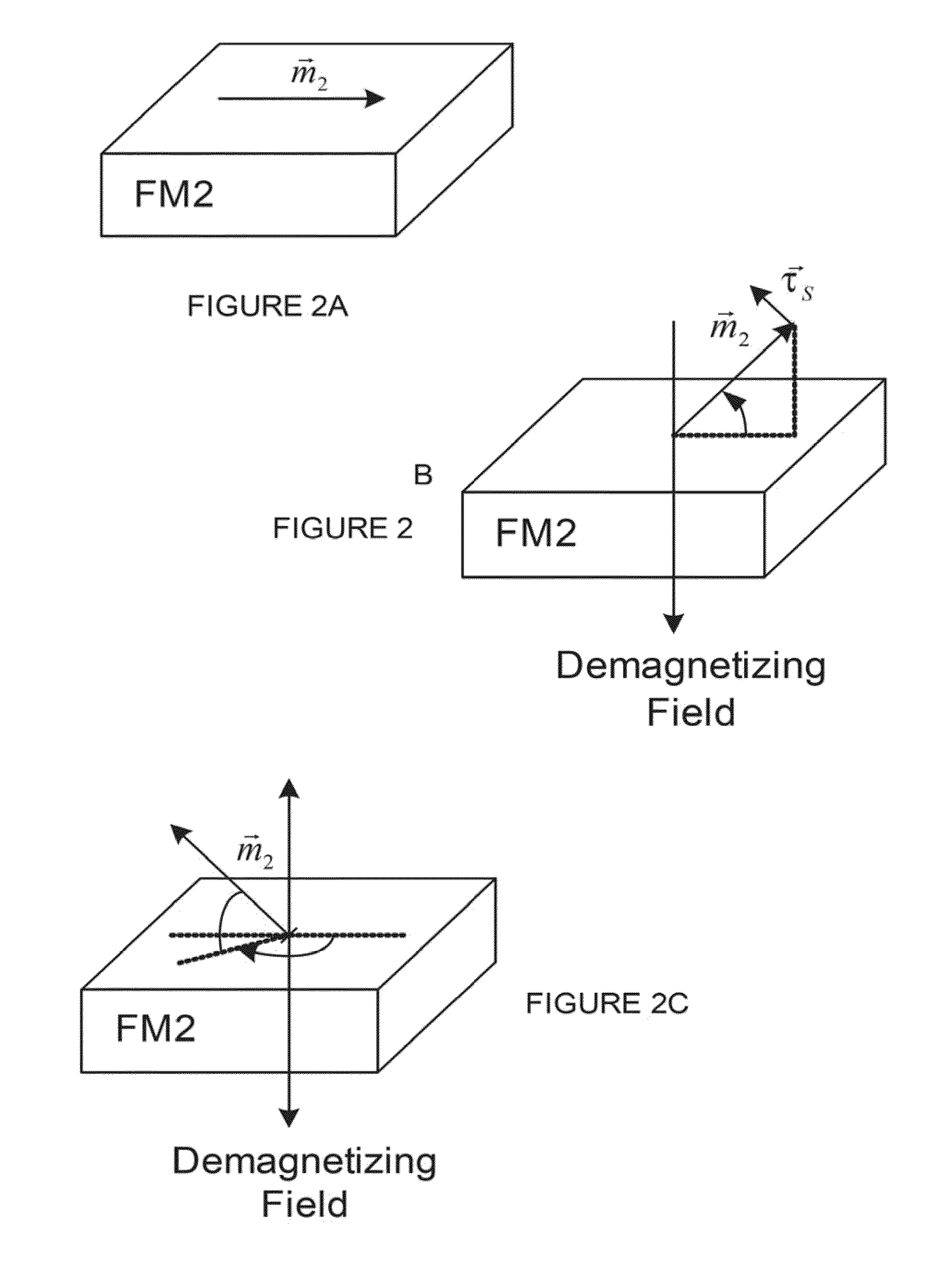High speed low power magnetic devices based on current induced spin-momentum transfer
a low-power, magnetic device technology, applied in the field of magnetic devices, can solve the problems of limiting the density of the memory, slow device operation, memory operation errors, etc., and achieve the effects of reducing power consumption, improving reliability, and speed of operation
- Summary
- Abstract
- Description
- Claims
- Application Information
AI Technical Summary
Benefits of technology
Problems solved by technology
Method used
Image
Examples
example
[0080]The operation of the magnetic device was simulated using Landau-Lifzshitz Gilbert equations including a spin-transfer torque.
[0081]FIG. 8 shows the amplitude of the current input applied to the magnetic memory device starting at an initial time t=0 and ending at t=30 picoseconds. This current input comprises two current pulses similar to the current input shown in FIGS. 3A and 6A.
[0082]A 16-picosecond positive current pulse is applied to the magnetic memory device to start the precession of the magnetization vector {right arrow over (m)}2 of the free magnetic layer FM2. After this 16-picosecond current pulse, a 14-picosecond negative current pulse is applied to the magnetic memory device to stop the precession of the magnetization vector {right arrow over (m)}2 of the free magnetic layer FM2 to achieve a desired state of the magnetization vector {right arrow over (m)}2. For magnetic memory devices, the precession is stopped after achieving a 180° rotation of the magnetization ...
PUM
| Property | Measurement | Unit |
|---|---|---|
| Digital information | aaaaa | aaaaa |
| Nanoscale particle size | aaaaa | aaaaa |
| Momentum | aaaaa | aaaaa |
Abstract
Description
Claims
Application Information
 Login to View More
Login to View More - R&D
- Intellectual Property
- Life Sciences
- Materials
- Tech Scout
- Unparalleled Data Quality
- Higher Quality Content
- 60% Fewer Hallucinations
Browse by: Latest US Patents, China's latest patents, Technical Efficacy Thesaurus, Application Domain, Technology Topic, Popular Technical Reports.
© 2025 PatSnap. All rights reserved.Legal|Privacy policy|Modern Slavery Act Transparency Statement|Sitemap|About US| Contact US: help@patsnap.com



